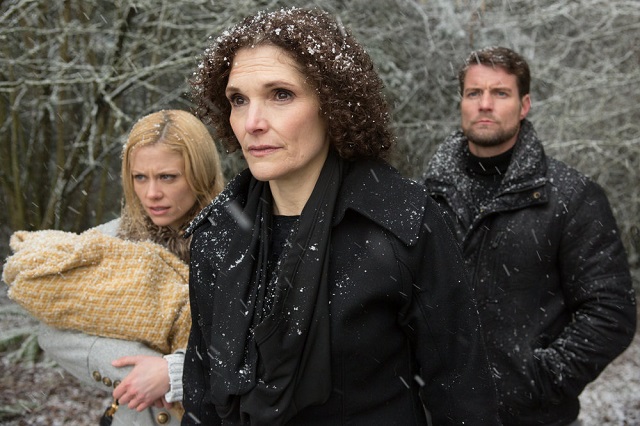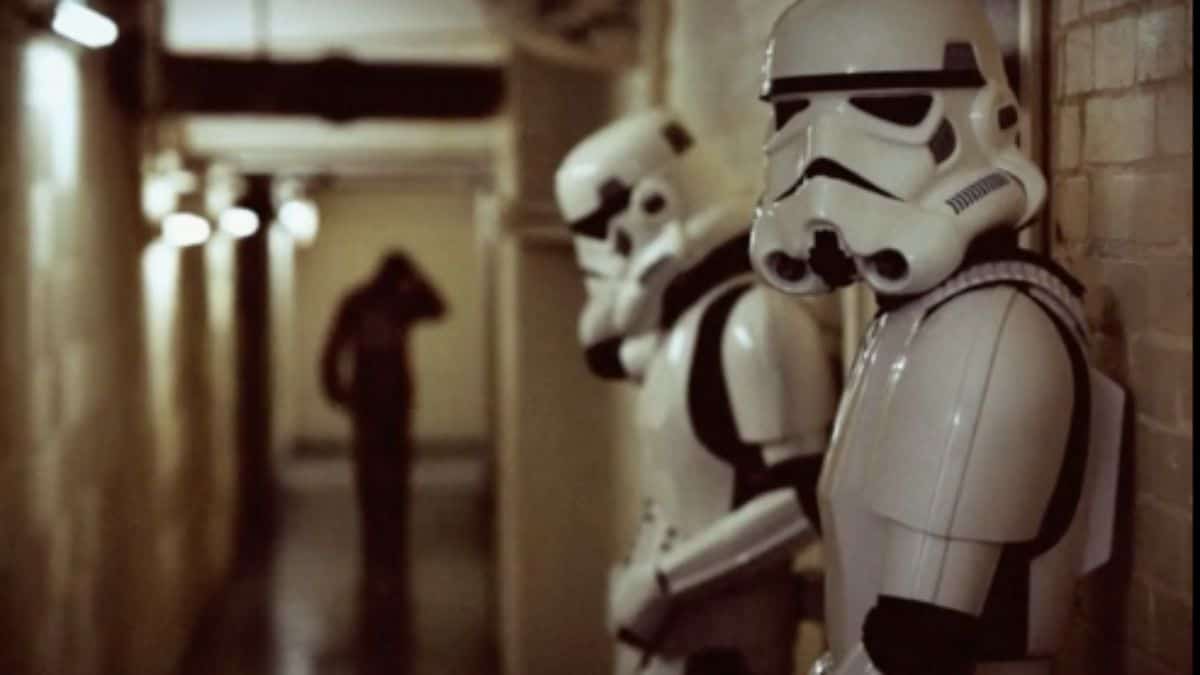Directed by Sean Branney
Written by Sean Branney and Andrew Leman, based on the story by H.P. Lovecraft
USA, 2011
The Whisperer in Darkness is an extraordinarily well-crafted film and it completely achieves its objectives. Oddly, the film’s greatest strength is also its greatest weakness.
The Whisperer in Darkness has two goals. First, to be a faithful Lovecraft adaptation.
While the film takes a few liberties with the original short story, especially in its ending, it does so in the interest of being even more bleakly Lovecraftian. The film is very faithful to Lovecraft’s ability  to parcel out creepy information in dribs and drabs from a variety of different medium including lost books, letters, recordings, phone calls, overheard conversations, expert testimony and found artifacts. Most importantly, The Whisperer in Darkness captures Lovecraft’s ability to give us protagonists who come to heroism late in their own narrative, in a universe that does not easily permit heroism; scholars who are both too curious and too naive; skeptics whose pursuit of truth makes them question God, but come to believe in something much worse than Hell; sane men in an insane universe.
to parcel out creepy information in dribs and drabs from a variety of different medium including lost books, letters, recordings, phone calls, overheard conversations, expert testimony and found artifacts. Most importantly, The Whisperer in Darkness captures Lovecraft’s ability to give us protagonists who come to heroism late in their own narrative, in a universe that does not easily permit heroism; scholars who are both too curious and too naive; skeptics whose pursuit of truth makes them question God, but come to believe in something much worse than Hell; sane men in an insane universe.
The short story and the film are about a folklore professor from Arkham Asylum named Albert Wilmarth (Matt Foyer) who leaves the university to investigate stories about strange creatures in the wilds of Vermont, creatures who may be aliens. Like Lovecraft’s 1927 short story The Color Out of Space, The Whisperer in Darkness is a smart blend of science-fiction and horror.
The Whisperer in Darkness‘ secondary but related goal is to adapt the 1931 short story in the style as the horror films of that time period, generally the Universal monster movies and specifically  James Whale’s Frankenstein (not uncoincidentally also from 1931).
James Whale’s Frankenstein (not uncoincidentally also from 1931).
The film looks like it could have been filmed by Whale’s production team right after Frankenstein wrapped. The mundane props, including a fantastic car and plane, are gorgeous and era specific. The more outré science-fiction type props look like electrical machines that Nikola Tesla and Ken Strickfaden designed for Frankenstein and never got a chance to use. In many ways, The Whisperer in Darkness looks like a replica of a film that never existed.
While it seems churlish to complain that it is too good a replica, the film is so faithful to the 1930’s Universal monster movies that it follows their pacing as well and drags quite a bit in the middle. It does accelerate as it hits the last reel into a fantastic bravura finish.
A greater failing is that the film is a replica and not an original. While The Whisperer in Darkness has a dry sense of humour, it lacks the arch camp sensibilities of James Whale’s best works. It apes  his style, but lacks Whale’s ability to encode subtext into his films. The homosexual subtext added by the openly gay Whale brought depth to the Outsider myth of his films, a depth that The Whisperer in Darkness is sorely lacking.
his style, but lacks Whale’s ability to encode subtext into his films. The homosexual subtext added by the openly gay Whale brought depth to the Outsider myth of his films, a depth that The Whisperer in Darkness is sorely lacking.
The film’s final failing is that it is too perfect a replica. The film is literally a perfect digital copy and that perfection is a distraction. The print needs to be dirtied up a little bit to look like it came from 1931 and not from 2011.
In fact, if the filmmakers were smart, they would bury the true back-story of how the film was made (for under half a million dollars by the H. P. Lovecraft Historical Society with the last, crucial dollars to complete the film contributed by Sandy Petersen, the writer of The Call of Cthulhu Role Playing Game.) Instead, they should claim that the film was shot in 1931 and has been sitting, lost and buried in a drawer somewhere ever since. (It would be both sadly hilarious and textually appropriate if they could talk Roger Ebert into narrating some historical prelude explaining how the film came to be shot in 1931 and then buried and forgotten until 2011.)
The greatness of The Whisperer in Darkness is that through great craftsmanship, it achieves its goals. The difficult question (that can only be answered by each viewer) is whether these are goals worth pursuing.
Michael Ryan







